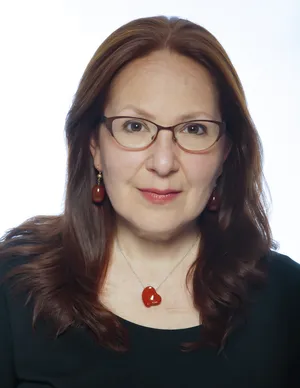NATIONAL MUSEUM OF THE AMERICAN INDIAN
“Developing Stories: Native Photographers in the Field” Presents Contemporary Native Experiences from the Inside
Since the turn of the 20th century, Native American photographers have taken the representation of their people into their own hands. In “Developing Stories: Native Photographers in the Field,” Russel Albert Daniels and Tailyr Irvine present original images that illustrate issues important to Native Americans today. Daniels (of Diné and Ho-Chunk descent) looks at the Genízaro people of Abiquiú, New Mexico. The Genízaro embrace the painful history of their ancestors and their perseverance in creating an enduring community. Irvine (Salish and Kootenai) visits the Flathead Reservation and nearby Missoula, Montana. She shows how blood quantum requirements for tribal enrollment complicate young people’s most personal decisions. Created in collaboration with the museum originally for exhibition in New York and Washington, as well as online, “Developing Stories” opens on the museum’s website with Daniels’ piece, to be followed this summer by Irvine’s essay.
:focal(3287x1225:3288x1226)/https://tf-cmsv2-smithsonianmag-media.s3.amazonaws.com/blogging/featured/Delvin_Garcia_at_Santa_Rosa_de_Lima_Church___Russel_Albert_Daniels.jpg)
The exhibition Developing Stories: Native Photographers in the Field presents photo essays by Native photojournalists Russel Albert Daniels (Diné descent and Ho-Chunk descent) and Tailyr Irvine (Salish and Kootenai), created in collaboration with the Smithsonian’s National Museum of the American Indian. Their essays reflect the work of a new generation of Native professional photographers who are motivated by two objectives: combating lingering stereotypes of Native Americans and pursuing what they call modern Indigenous stories—stories of contemporary Native people rooted in their lived experiences. These stories, as the photographers contend, are underrepresented, if not entirely overlooked, in the media. Deeply concerned with who tells these stories, which fall outside most non-Native Americans’ experiences, Daniels and Irvine offer complex, nuanced, and thought-provoking portraits of what it means to be Native in the United States today.
Their work, like that of other socially aware Native photographers, is even more remarkable in light of the fact that (as they know) Native Americans’ relationship to photography is steeped in colonialism and its costs. During the 19th century, photography was used as a tool by the dominant society to promote its ideology of Manifest Destiny. Whether they were photographed by the growing cadre of commercial photographers documenting the country’s westward expansionism or by members of the Bureau of American Ethnography trying to establish anthropology as a modern academic discipline, Native peoples were overwhelmingly portrayed as a “Vanishing Race,” captured in their “native wilds” or posed in photographers’ studios with props that would ensure their “Otherness.”
Images taken by commercial photographers were mass produced as carte de visites or stereo cards for parlor entertainment—which is to say, to confirm Victorian notions of “savage life.” They were sold to publications such as Frank Leslie’s Illustrated Newspaper and Harper’s Weekly to be translated into engravings and used to illustrate coverage of the United States’ final push to settle the West. In these journals’ pages, Geronimo, Sitting Bull, and other Native leaders who resisted giving up their homelands and seeing their people confined to reservations were excoriated as obstacles to “Progress.”
Equally indifferent to Native Americans’ human condition, ethnographers, for whom photography went hand-in-hand with fieldwork, used their cameras to document racial types and illustrate disproven and disgraced concepts concerning the relationship between race and mental ability. Or they were used to help create “accurate” museum dioramas showing mankind’s presumed life stages and relationship to the natural environment. Well into the 20th century, government employees and missionaries alike used photography of American Indians to document the success of the country’s assimilation policy. These images appeared in publications such as Indians at Work, produced by the Bureau of Indian Affairs during the 1930s and early 1940s. At the same time, an army of marketing men used images of Native people in traditional dress selling crafts or, preferably, performing “picturesque” traditions to promote tourism to Niagara Falls, the Florida Everglades, and the American Southwest. Traditions photographed at will included sacred ceremonies. The conception of respect for American Indian religious practice was absent.
But also beginning at the turn of the last century, a small number of gifted Native individuals got hold of state-of-the-art cameras (e.g., wood view cameras outfitted with Bausch & Lomb Unicum shutters and Graflex Speed Graphics) and trained their photographer’s eye on people and places important to them. Jennie Ross Cobb (Cherokee, 1881–1959), Horace Poolaw (Kiowa, 1906–1984), and Lee Marmon (Laguna, b. 1925) stand out among them. Considered the first female Native American photographer, Cobb photographed her Cherokee Female Seminary classmates attired in Edwardian womenswear: large brimmed hats, loose white blouses with cuffed sleeves and high collars, and ankle-length skirts cinched and belted at the waist. Cobb photographed students not only on their campus but walking newly laid railroad tracks along with local townsfolk. Working in and around Anadarko, Oklahoma, Horace Poolaw captured his Kiowa family and neighbors as they saw themselves—as flappers, deacons, parade-goers, and World War II sailors and soldiers. Lee Marmon trained his camera on Laguna and other Pueblo peoples and brought an artist’s sensibility to every scene he shot, whether of elders, such as, famously, a Laguna elder wearing Chuck Taylor All-Star sneakers; adobe architecture shown from unexpected angles with a minimalist’s aesthetic; ceremonies; or the surrounding landscape. Together, a slowly increasing number of 20th-century Native photographers produced views of public and private Native life that had never been caught on film before. Creating remarkable portraits, these photographers imaged their community members—educated, sophisticated, and fashionable, or humble and hard-working—with humanity and dignity, and clearly grounded in the present.
Today’s Native photographers—a growing new generation—bring their own way of looking and their own way of focusing on Native peoples’ lived experiences as they unfold in the 21st century. Many use photography to investigate and raise awareness about social and political issues confronting Native peoples and are concerned with capturing moments that can create social impact—even social change. Think of those who traveled to the Standing Rock Reservation in 2016 and 2017 to document the Dakota Access Pipeline protests spearheaded by Lakota peoples. Few of these young Native photographers are well known to mainstream magazine and newspaper photo editors, let alone to the public at large. Developing Stories: Native Photographers in the Field features essays by two such talented and concerned photographers.
Both Russel Albert Daniels’ The Genízaro Pueblo of Abiquiú and Tailyr Irvine’s Reservation Mathematics: Navigating Love in Native America are about community and people’s intensely felt identification with their community. They are also about how that relationship is, in one way or another, profoundly shaped by colonialism. Daniels’ essay presents a 266-year-old community born out of an incredibly violent history. In many ways, its members have long come to terms with that history as a strategy for survival. Yet as a community they also feel a deep need to memorialize it every year. Irvine’s essay introduces tribal members whose perception of belonging has been problematized by tribal enrollment regulations concerning their and their partner’s blood quantum (see Notes below) that will determine their children’s eligibility for membership within their own tribe. Daniels’ essay looks at how colonialism still casts a long shadow over a community and smolders within. Irvine’s essay looks at young Native Americans facing an existential crisis and perhaps the most worrisome legacy of colonialism impacting their generation.
The Genízaro Pueblo of Abiquiú, Russel Albert Daniels
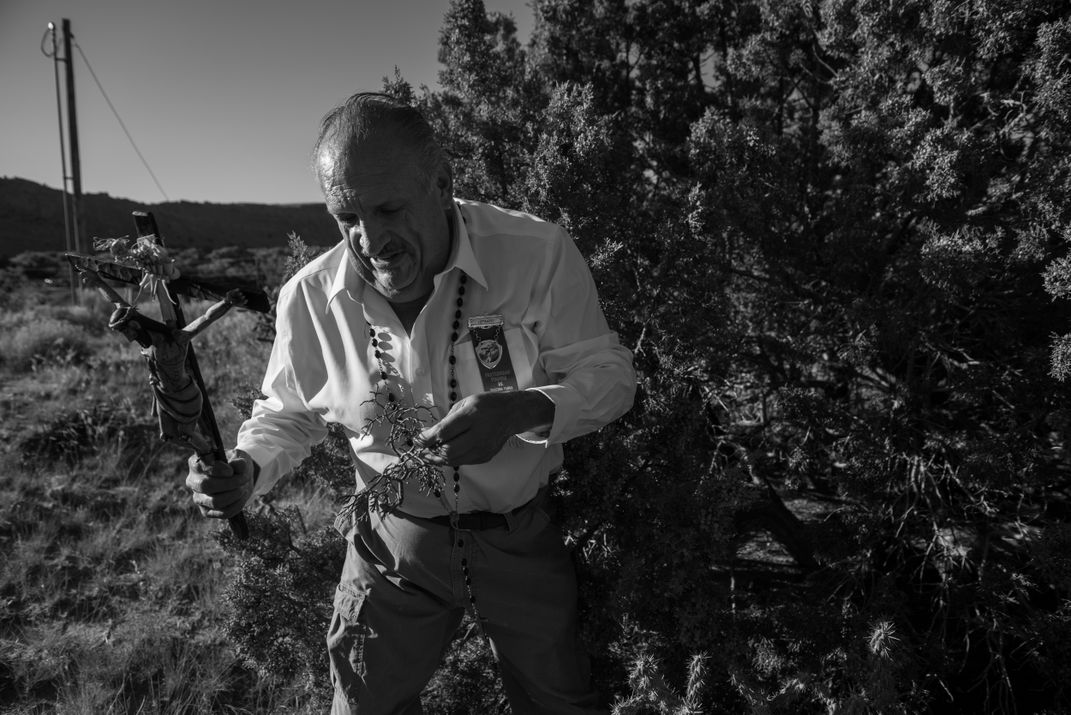
The Genízaro people whose lives Russel Albert Daniels explores in his photo essay live on the Abiquiu Land Grant in northern New Mexico. The 16,000-acre land grant was issued by Spanish colonial authorities in 1754, and Genízaro have been living on and managing the land for almost 300 years. Genízaro descend from Indigenous peoples who bore the brunt of Spanish colonialism in the Southwest. Their ancestors were war captives—mostly Hopi, Comanche, Apache, Ute, Kiowa, Pawnee, and Navajos—whom Spanish colonists “ransomed” from other Native nations during the 16th and 17th centuries. Under the guise of humanitarianism, these people were baptized, given Christian names, and taught Spanish while being forced to work as household servants, tend fields, herd livestock, and serve as frontier militia to protect Spanish settlements. Many experienced great physical and sexual abuse. Thus “re-educated,” they and their children, many fathered by Spaniards, were classified by the Spanish as Genízaro.
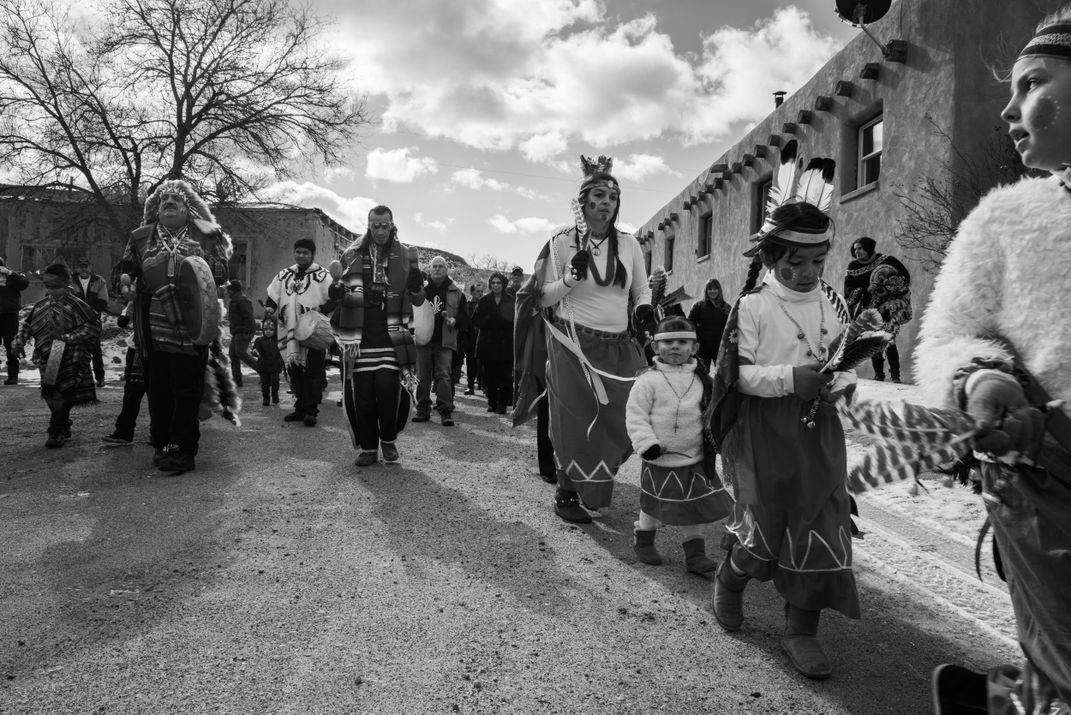
In some ways, Daniels’ essay is made in response to Genízaros who have recently expressed their thoughts about their history and identity in the press, including National Public Radio and The New York Times, and to Genízaro academics, such as Moises Gonzales, co-author of Slavery in the Southwest: Genízaro Identity, Dignity and the Law. But equally Daniels is motivated by his own family history. Daniels’ great-great-grandmother, Rose, was taken captive by White River Utes who killed her family. She was Diné and about five years old at the time. She was trafficked among Utes until she ended up in the family of a Mormon frontiersman. Daniels’ knowledge of how violence, human trafficking, and disenfranchisement have dramatically impacted the lives of many Native peoples living in the present-day American Southwest drew him to explore the unsettling history of the Genízaro people.
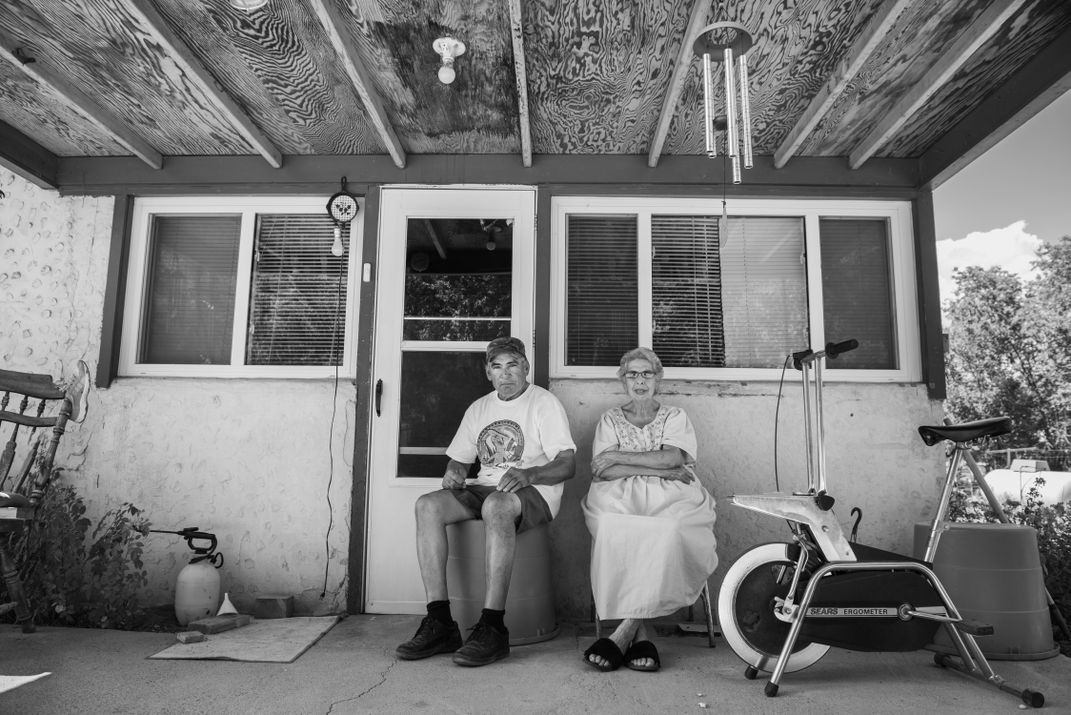
Daniels does so through 24 black-and-white images showing Genízaro life in and around the Pueblo of Abiquiú. Made over a two-month period in late 2019, Daniels’ photographs subtly reveal a people literally surrounded by their history. It is embedded, for example, in the remains of colonial architecture that define their landscape, the acequias—ancient irrigation systems that combined Indigenous and Spanish technologies—and apple orchards first introduced by the Spanish that they maintain, and the ancient Pueblo sherds they find in their fields, reminders of the Indigenous peoples who farmed the land long before the Spanish intrusion.
But as Daniels’ photography also illuminates, the Genízaros’ history is commemorated directly and indirectly through community observances. Daniels photographed Abiquiú around the feast days of Santa Rosa de Lima and Santo Tomás. Throughout their history, the Genízaro people of Abiquiú have attended mass on the Feast Day of Santa Rosa de Lima in what are now the remains of the early-18th-century church built in her name, one mile outside Abiquiú. This celebration was of profound importance to their earliest and most vulnerable ancestors, who recognized Santa Rosa de Lima as their pueblo’s patron saint and protectress. (This even though the church in their pueblo is dedicated to Santo Tomás, a fact not unnoticed historically by parish priests.) On the feast day of Santo Tomás, in a ceremony dating back at least two centuries, the Genízaro people of Abiquiú reenact the Spanish ransom of their captive ancestors, history that dramatically altered their lives. Virtually every generation of Genízaro living in Abiquiú, in other words, has paid homage to their ancestors who bore the painful brunt of colonialism and has expressed pride in those who carved out meaningful lives for themselves on the Pueblo of Abiquiú Land Grant.
Reservation Mathematics: Navigating Love in Native America, Tailyr Irvine
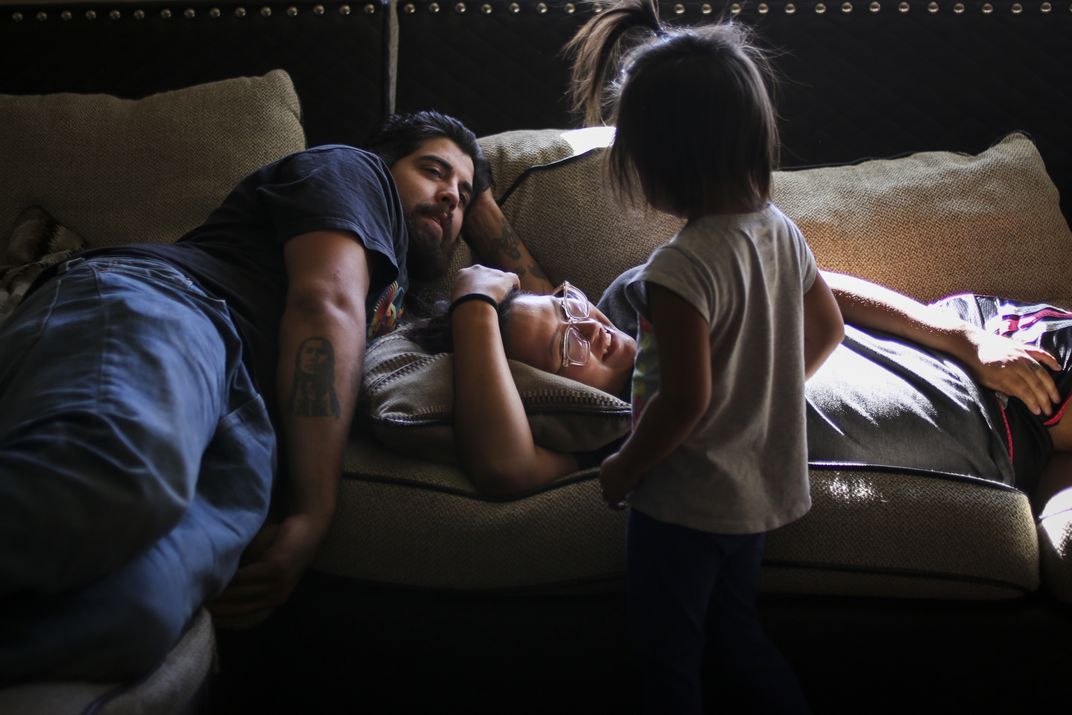
In Reservation Mathematics: Navigating Love in Native America, Tailyr Irvine examines the legacy of U.S. government regulations affecting Native Americans’ most personal decisions—specifically, the challenge blood quantum requirements pose for young Native Americans who want children and want them enrolled within their own tribe. With the passage of the 1934 Indian Reorganization Act, the U.S. government created blood quantum requirements as a means for determining who could be considered “Indian” and enrolled in a specific tribe. These requirements set not only criteria for tribal enrollment, but also qualifications for housing, healthcare, education, etc. According to Irvine, young Native Americans are facing greater pressures in their dating life and choice of partner than previous generations. These pressures are the result of the increasing number of tribal members whose blood includes more than one tribe or race and thus limits their child’s eligibility to be enrolled in their tribe. As Irvine points out, these dating pressures are unique to Native Americans. Irvine visited the Flathead Reservation in Montana and the nearby city of Missoula to document tribal members’ personal and political outlooks on blood quantum and its toll on their lives.
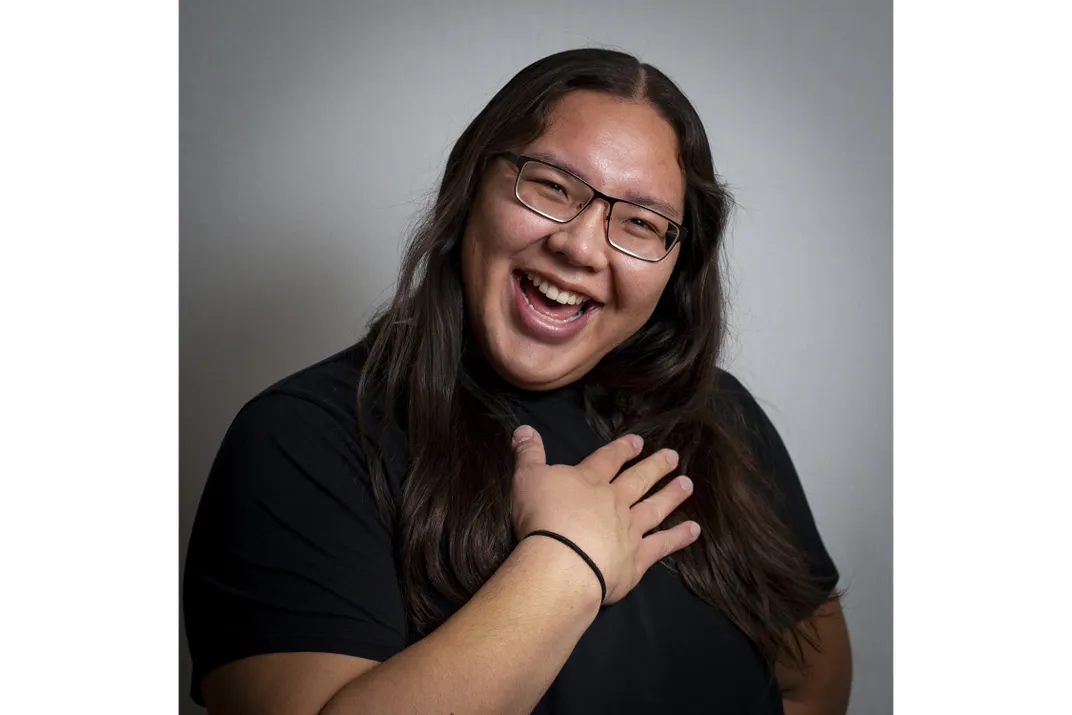
Irvine’s photo essay provides a clear understanding of what these regulations mean to actual couples and individuals, some with whom she is personally involved. She takes us into their homes where life is simply happening and follows them through their day as they socialize, hunt on restricted tribal lands, or visit tribal enrollment offices to confirm their own blood quantum or register their child, and we see what they are living through. Her images speak to family concerns and government red tape. Irvine’s essay also includes several formal portraits of individuals and couples—high schoolers, members of the LGBT community, a tribal council member, a college student—whose awareness of and attitudes towards blood quantum regulations vary greatly, according to their age, gender, sexual orientation, and place of birth, as well as their own blood quantum. Frontally posed (for the most part) against a minimal background, some of the sitters are carefree; others express tension. One sitter’s tribal status has recently changed due to a re-evaluation of her blood quantum. She is left knowing that inside she is still the same person, although on a piece of paper, her status within the tribe is now legally different. Irvine’s portraits promote awareness of how individual lives are impacted. These powerful glimmers of individuality bind her essay together. Her sitters’ human presence fills her frames, as do their individual stories, which are as unique as are they and all too familiar—to Native Americans.
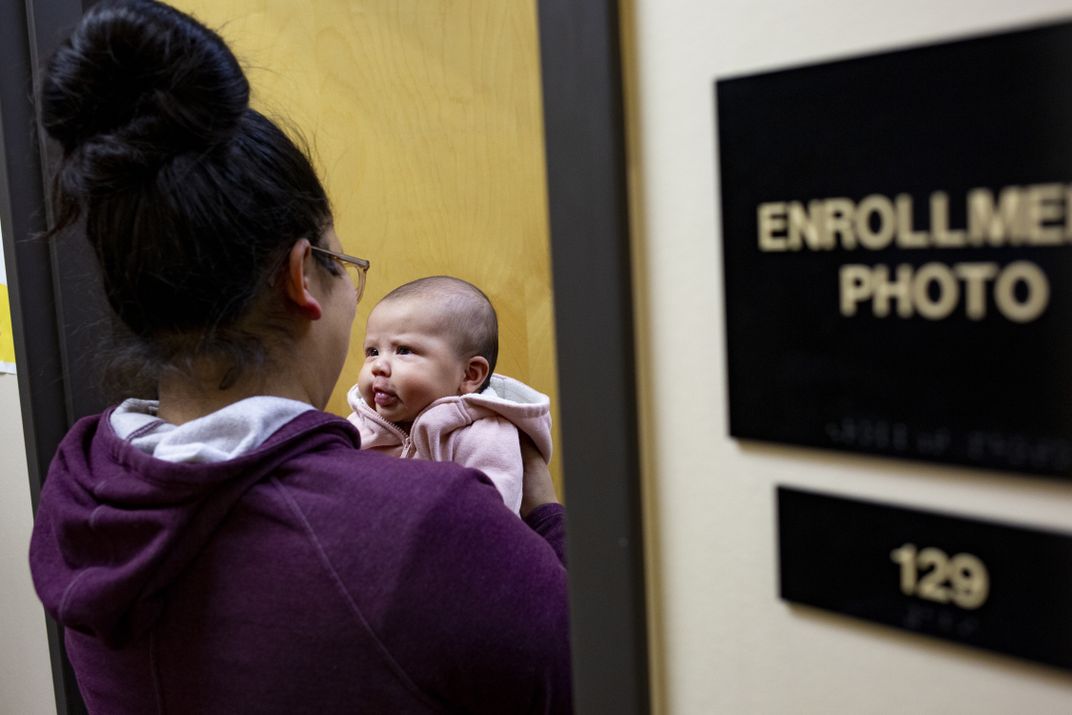
Arguably, Native American photography is at a transformational point. A growing number of Native editorial photographers and photojournalists are examining contemporary Native life and communicating honestly about it. They are delving into political, economic, and social justice issues; concepts of identity, gender, sexual orientation, and race; climate change; and legacies of colonialism in order to make sense of the world. And like Daniels and Irvine, they are revealing aspects of the America experience that are largely invisible to mainstream society.
_________
Notes
According to the Bureau of Indian Affairs, one’s degree Native American or Alaska Native blood “is computed from lineal ancestors of Indian blood who were enrolled with a federally recognized Indian tribe or whose names appear on the designated base rolls of a federally recognized Indian tribe.” (Bureau of Indian Affairs. Accessed online March 12, 2020.)
For more work by contemporary Native photographers, see Native American Photographers Unite to Challenge Inaccurate Narratives, The New York Times, May 1, 2018, and Native Americans Are Recasting Views of Indigenous Life, National Geographic, December 2018. Also see Natives Photograph, a directory of emerging and professional Native photographers.
Daniels’ and Irvine’s photo essays will be on view at the National Museum of the American Indian in New York and Washington, D.C., as well as online.
The Genízaro Pueblo of Abiquiú, Russel Albert Daniels
Washington and New York through July 6.
Reservation Mathematics: Navigating Love in Native America, Tailyr Irvine
Washington and New York July 14 through October 18.

